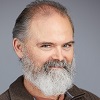2: Introduction to Biology
- Page ID
- 5012
\( \newcommand{\vecs}[1]{\overset { \scriptstyle \rightharpoonup} {\mathbf{#1}} } \) \( \newcommand{\vecd}[1]{\overset{-\!-\!\rightharpoonup}{\vphantom{a}\smash {#1}}} \)\(\newcommand{\id}{\mathrm{id}}\) \( \newcommand{\Span}{\mathrm{span}}\) \( \newcommand{\kernel}{\mathrm{null}\,}\) \( \newcommand{\range}{\mathrm{range}\,}\) \( \newcommand{\RealPart}{\mathrm{Re}}\) \( \newcommand{\ImaginaryPart}{\mathrm{Im}}\) \( \newcommand{\Argument}{\mathrm{Arg}}\) \( \newcommand{\norm}[1]{\| #1 \|}\) \( \newcommand{\inner}[2]{\langle #1, #2 \rangle}\) \( \newcommand{\Span}{\mathrm{span}}\) \(\newcommand{\id}{\mathrm{id}}\) \( \newcommand{\Span}{\mathrm{span}}\) \( \newcommand{\kernel}{\mathrm{null}\,}\) \( \newcommand{\range}{\mathrm{range}\,}\) \( \newcommand{\RealPart}{\mathrm{Re}}\) \( \newcommand{\ImaginaryPart}{\mathrm{Im}}\) \( \newcommand{\Argument}{\mathrm{Arg}}\) \( \newcommand{\norm}[1]{\| #1 \|}\) \( \newcommand{\inner}[2]{\langle #1, #2 \rangle}\) \( \newcommand{\Span}{\mathrm{span}}\)\(\newcommand{\AA}{\unicode[.8,0]{x212B}}\)
- 2.1: Introduction
- Biology is a broad field that ranges in scale from the microscopic to the geographical. Evolutionary theory is crucial to biology. Charles Darwin's theory of natural selection came from a historical context where many other scientists were contributing to evolutionary theory. Natural selection means that individuals compete for resources and those with the variations that make them more fit to survive in a certain environment tend to survive and reproduce more.
- 2.2: Scale, Human Space, Powers of Ten for Physical Anthropology
- Anthropology is a broad field that incorporates many sub-fields and borrows from many other disciplines, so the space that is relevant to physical anthropology is also vast. It ranges from the atomic particle that causes genetic mutation—the primary cause of evolution—to the plasticity of the human body because of our need to adapt to seasonal changes caused by the elliptical orbit of the planet in the solar system. Anything bigger or smaller is beyond the scope of physical anthropology.
- 2.3: Evolutionary Theory (Part 1)
- Understanding evolutionary theory is crucial for all the chapters that follow. For example, in the paleoanthropology section we will make arguments about how natural selection gave our ancestors advantages in different environments, and we will argue how gene flow kept our recent ancestors from becoming separate species. If you don't learn about the forces of evolution now you won't understand the arguments we're going to make later.
- 2.4: Evolutionary Theory (Part 2)
- One of the most profound impacts Darwin had was to change how we ordered life, from a ladder (like the Great Chain of Being) to a tree.
- 2.5: Evolutionary Theory (Part 3)
- Science doesn't stop with a founder. Creationists blame Darwin for evolutionary theory but most biologists wouldn't call themselves “Darwinists”, any more than most physicists wouldn't call themselves “Newtonists.” Natural selection is just one factor of evolutionary theory. People know much more about evolution today than they did during Darwin's time. That doesn't mean that Darwin was wrong, just that science has progressed.
- 2.6: "Forces" of Evolution
- We use the word "force" to refer to a process that drives change, but thinking about evolution as a set of forces can be dangerous because it's easy to fall into the trap of thinking of evolution as a directional agent, pushing organisms towards an ultimate goal.
- 2.7: Genetics, Cellular Biology, and Variation (Part 1)
- What is the cause of human variation? How does it happen at the cellular level? Darwin knew that variation was essential for the functioning of natural selection, but he had no clue how it worked. Mendel's research in heredity suggested principles of simple variation, but failed to explain 90% of what you see in life. In order to understand where most of variation comes from you need a microscope, and understand basic cellular biology and genetics.
- 2.8: Genetics, Cellular Biology, and Variation (Part 2)
- Deoxyribonucleic Acid is the chemical name for DNA we use to talk about its chemical structure. It comes in packages, called chromosomes which we can see in the microscope when it's all natted up as big dreadlocks inside the cell nucleus, when the cell is about to divide.
- 2.9: Summary Example- Holism in Anthropology, Sickle Cell Anemia and Malaria
- Anthropology is holistic because it covers many branches of knowledge. To understand sickle cell anemia we need look at the smallest change in a base pair, and at the global migration of alleles. We need to look two thousand years back in time to a transition from hunter-gatherers to horticulturalists, to the racial discrimination of the 20th Century. We apply the knowledge to the most deadly disease on the planet, and to mixology.


